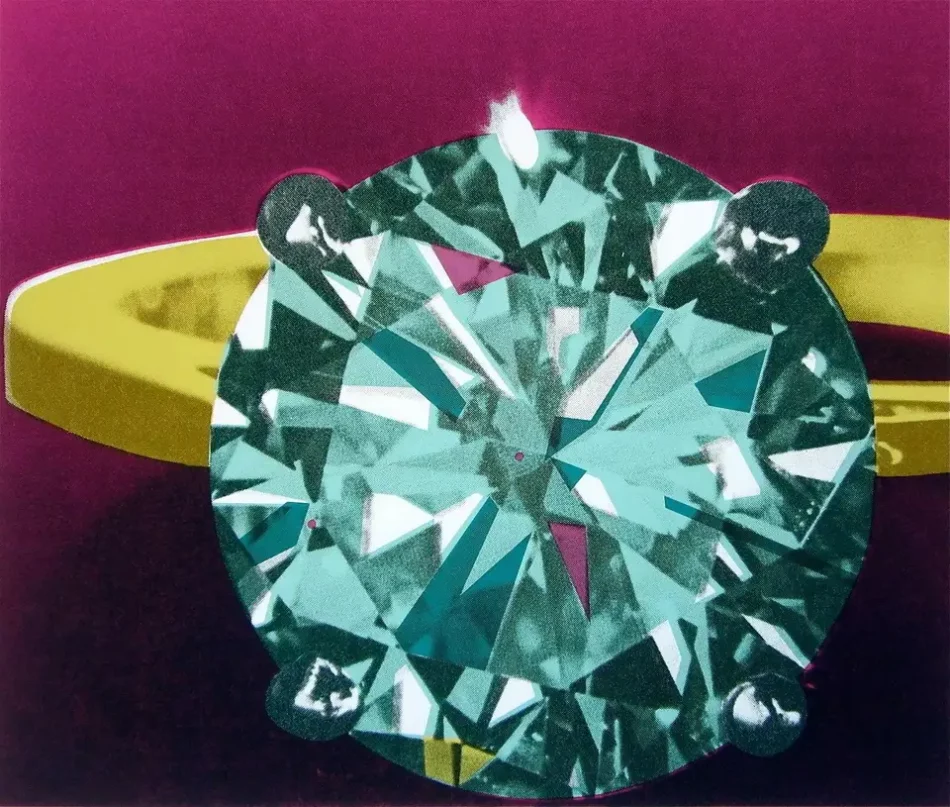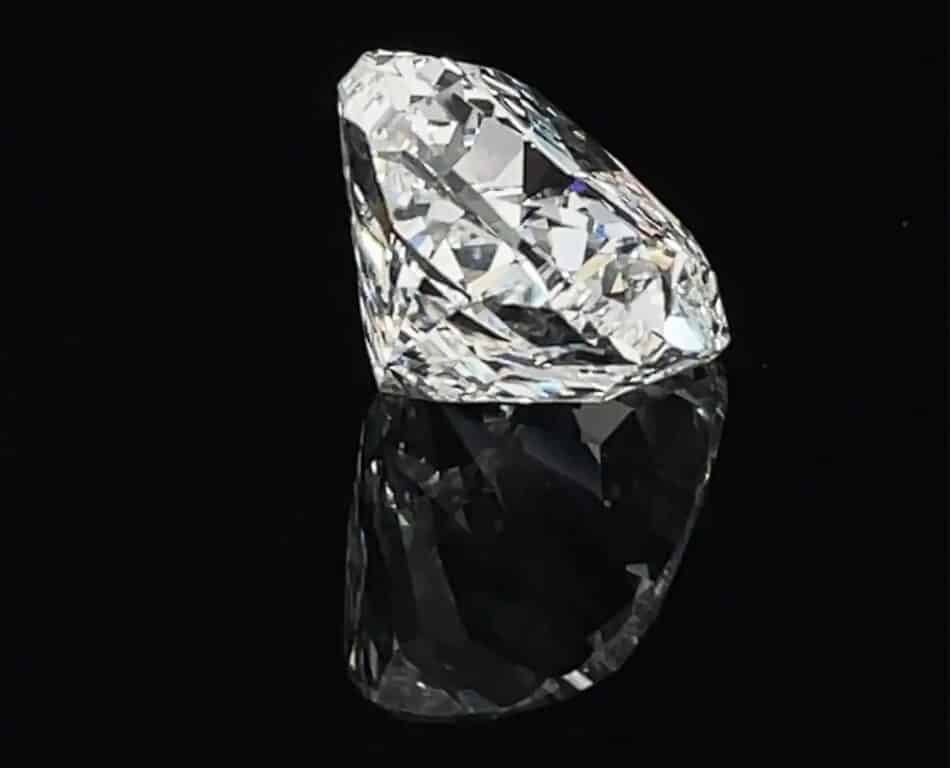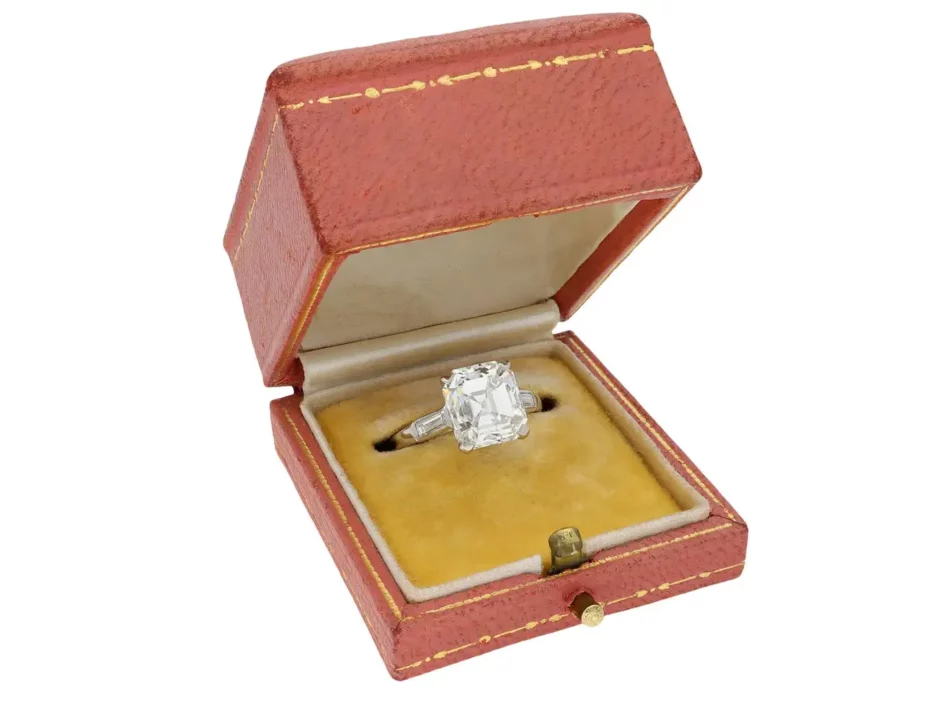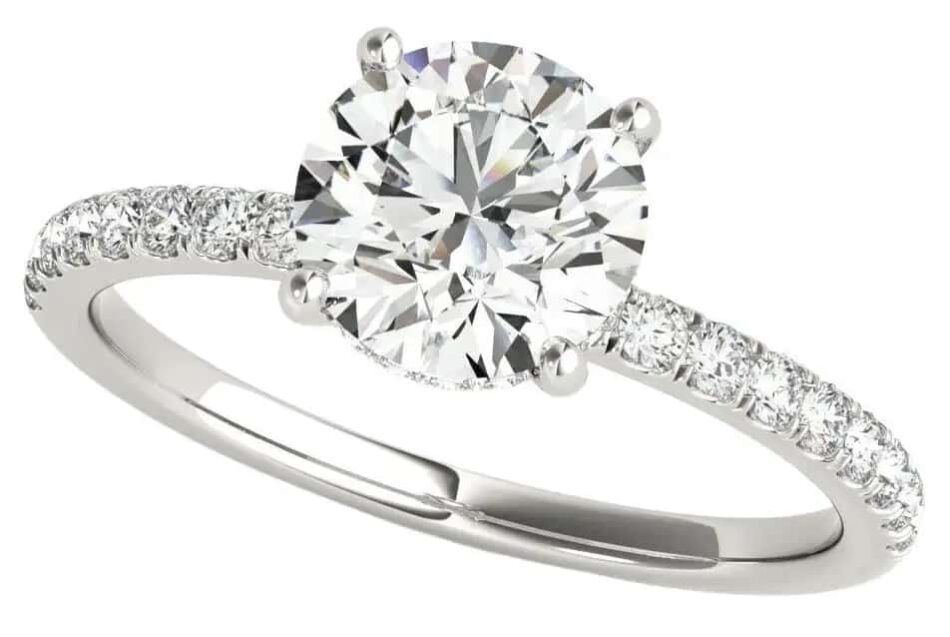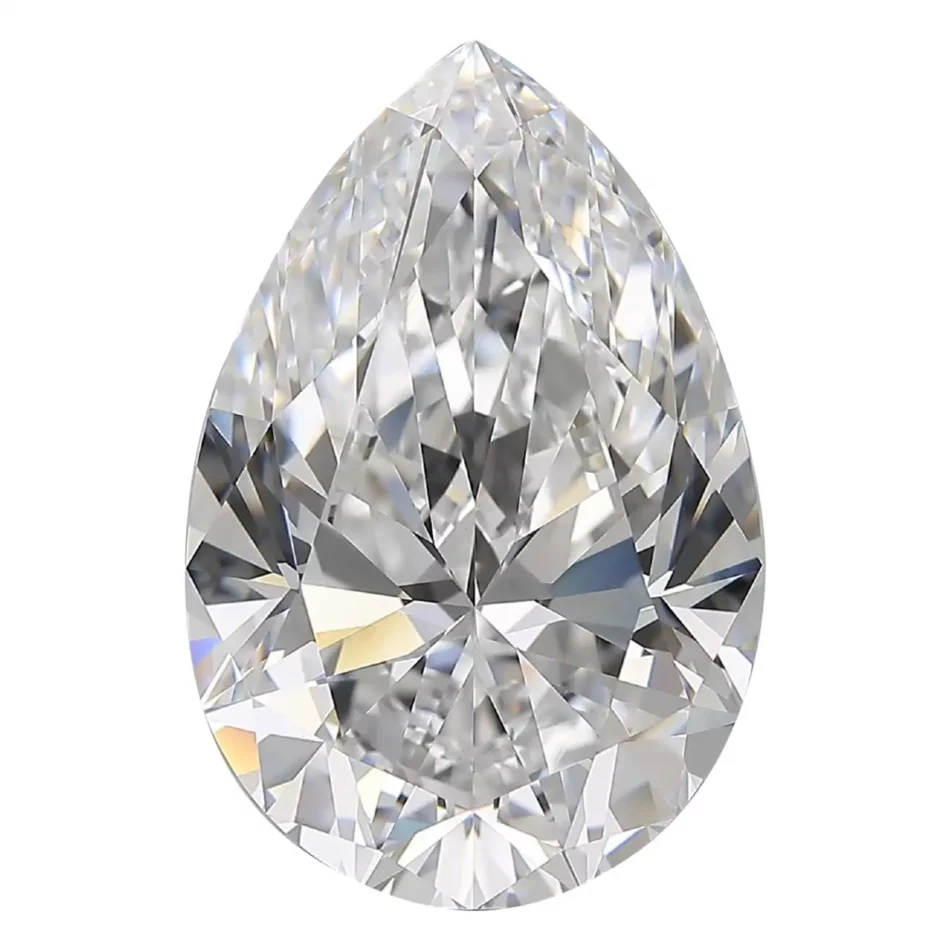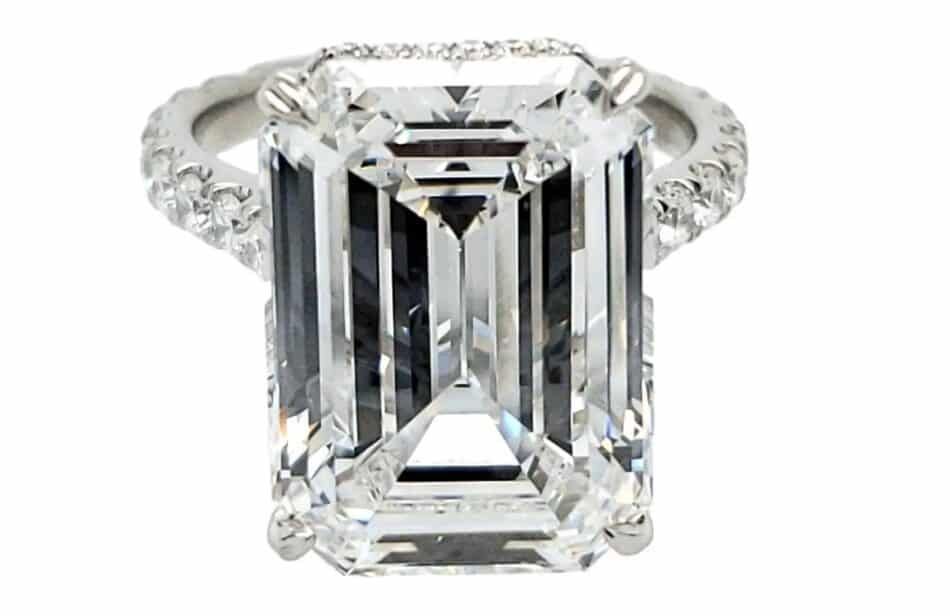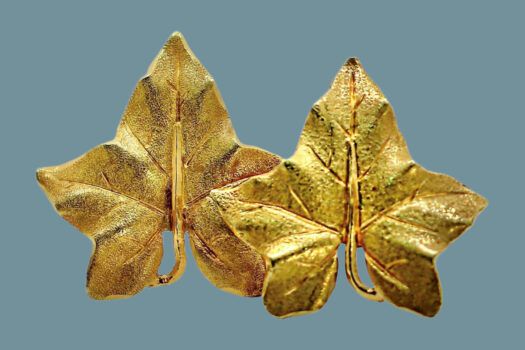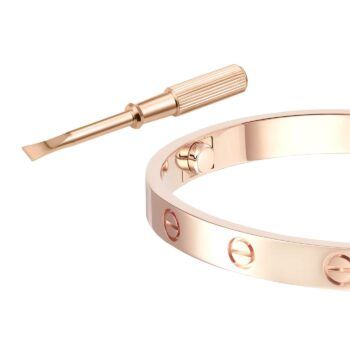Could that “girl’s best friend” actually be a phony? Say it ain’t so. Long before Marilyn Monroe sang of the affinity between a woman and her bling in the classic 1953 movie Gentlemen Prefer Blonds, the diamond had become an icon of cultural resonance — not something that could (or should) be faked. The ancient Greeks considered diamonds to be tears of the gods. The Egyptian pharaohs thought they signified power. Louis XIV would have agreed: For one especially important meeting, he made an impressive show of authority in a suit embroidered with diamonds.
Only the real thing could have that effect.
So, how do you spot a fake diamond? How can you avoid being taken in by a synthetic or natural stone masquerading as a diamond? We reached out to experts for DIY methods of distinguishing genuine gems from impersonators like naturally occurring moissanite and lab-made cubic zirconia.
While eager to share tips, they cautioned that only a professional appraisal is guaranteed to be accurate. “Have your diamond GIA certified,” says Alexandra Nova, director of sales and marketing at Jack Weir & Sons. “If you’re buying from a credible dealer, they should be providing you with a GIA certificate or an alternative.”
Another caution: Distinguishing between natural and lab-grown diamonds is something you can’t do on your own. “It requires a special machine,” says Michael Malakov, of Roman Malakov Diamonds, who graduated from the GIA Diamonds program. He notes that it’s worth the trouble, because natural diamonds cost about 90 percent more than those from a lab.
Popular Diamond Simulants
Synthetic diamonds aren’t the only stones to look out for. A number of natural “dupes” appear like the real thing to the untrained eye. Along with familiar stand-ins like glass, moissanite and cubic zirconia, these include white sapphires, white topaz, white zircon and phenakite, whose name aptly comes from the Greek word phenakos, meaning deceiver. Each of these “diamond simulants” is unique in its own way, with its own refractive index (RI), which is the measure of how light bends, or refracts, as it passes through the mineral. Because diamonds have a dense molecular structure, they have very high RIs. This bending disperses light outward and inwards, from facet to facet, lending diamonds their captivating brilliance, fire and luster.
Diamond is also the hardest naturally occurring mineral, ranked 10 on the Mohs scale, the most popular measure of a gemstone’s durability and resistance to scratching. Moissanite —first identified in 1893 in meteorites by the Nobel Prize–winning chemist Dr. Henri Moissan and commercially grown for the jewelry industry since the mid-1990s — is a close rival to diamond in terms of hardness, with a Mohs number of 9.25.
Moissanite also has a slightly higher RI than diamond and is double refractive meaning that light rays bend in two as they pass through. This produces a rainbow effect and less white light than is generated by a natural diamond. Moissanite has become a very popular engagement ring stone because of its clarity, fire and durability. But if you’re looking for a true diamond, Moissanite’s unique optical qualities make it relatively easy to identify under a loupe.
Here are some tests you can perform and details you can look for to distinguish diamonds from lookalikes, whether made in a lab or extracted from the earth.
The Scratch Test
This test requires a low-power magnifier, which you might already have at home. “Cubic zirconias have a lot of scratches,” says Malakov, “but you can’t really scratch a diamond.” So, look for scratches. Or take a chance and rub the stone against sandpaper — a real diamond will maintain its brilliance; a fake diamond won’t. Beware of one myth that flips this logic: It isn’t true that only a diamond can scratch glass. Any material with a Mohs number greater than 5 can do that.
The Water Test
This requires only a full glass of water and a loose stone. Drop the stone in the glass. A true diamond will fall quickly to the bottom, while most fake diamonds will float and sink slowly. “A diamond has a high density,” explains Nova, “so it should get to the bottom of the glass much faster than cubic zirconia.”
This test can’t be used for stones in a setting, limiting its usefulness for anyone except jewelry makers and those wanting to create custom designs from purchased stones or ones removed from heritage pieces they want remodeled.
The Fog Test
Breathe on the stone. The resulting fog will dissipate immediately if it’s a diamond and linger if it’s a cubic zirconia or moissanite. Natural diamonds, which come from the hot core of the earth, are remarkably efficient when it comes to conducting heat. Bear in mind, however: This test will not reliably distinguish natural from lab-grown diamonds, since they share the same chemical, physical and optical properties and so disperse heat the same way.
See-Through Test
Put a loose stone on top of the print in a newspaper, magazine or book. If you can read the text underneath, the stone is likely a moissanite or cubic zirconia. “A real diamond has enough facets to refract the light,” says Nova, “so no text should be coming through.” Similarly, you shouldn’t be able to see the setting beneath a mounted diamond.
Sparkle Test
If you set a true diamond next to a moissanite or cubic zirconia of the same color and clarity, the diamond will reflect more light, giving it greater sparkle. As mentioned above, Moissanite typically emits flashes of rainbow light, while cubic zirconia has a lower refractive index than diamond (about 2.15 to diamond’s 2.42) meaning that it sparkles less intensely than the real thing. As noted above, Moissanite typically emits flashes of rainbow-colored light, while cubic zirconia has a lower refractive index than diamond (about 2.15 to diamond’s 2.42), meaning that it sparkles less intensely.
Consider the Setting
“People come to me all the time with things that they have found,” says Malakov. To determine whether the stone is genuine, the first thing he looks at is the mount. “People come to me all the time with things that they have found,” says Malakov. “When something is set in sterling silver, it’s a red flag that it’s not real.”
In addition to being less expensive (and why set a pricey stone in a less pricey setting?), sterling silver is soft, so the stone is more likely to come loose.
One caution: Don’t confuse sterling silver, marked 925, with rare and very expensive platinum, which may be marked Platinum, PLAT or PT, or with white gold. The latter can appear blackened, like tarnished silver, but this is due to the rhodium with which it is typically coated having peeled off or worn away.
Check the Color
It takes a certified professional to determine the color grade of a diamond, which goes from D (colorless) to Z (light yellow or brown). Hues J to Z, however, can be distinguished by the naked eye. So, a colorless gem should raise suspicions. There’s a small chance it may be an extremely rare grade D diamond, but as Malakov points out, “cubic zirconias are all white.” Colorless and common. Consider the odds.
Diamonds in antique settings often appear warmer in tone than modern ones because they typically have high crowns, small tables and open culets (the open facet at the base of the stone). Such a cut splinters the light less than modern ones, resulting in reduced brilliance but a glittering glow that is enhanced by candlelight.
Examine the Facets
“If you put a diamond to the light, the angles of the facets of a real diamond are very sharp and meet perfectly,” says Malakov, noting that by contrast, “in a cubic zirconia, the angles aren’t very straight, and they don’t meet perfectly — you might have some facet overlapping or some extra facets.”
Most high-quality diamonds “will have facets on the girdle,” adds Nova, referring to the thin band that touches the setting and divides the bottom of the gem from its crown. “Instead of being perfectly smooth, it should look like someone made little marks with a blade around the girdle. It’s a very specific thing that you can probably see with a loupe.”
Vintage stones might have larger, slightly misaligned triangular facets. Indeed, old mine diamonds are often described as “romantic” because of their hand-cut look and warm tonal color. Although crafted by skilled artisans, they don’t display the same sharp symmetry as modern gems, which are usually shaped and finessed by machine and are characterized by a softened profile, which is often cushion-shaped.
Look for Flaws
It’s estimated that fewer than 0.5 percent of natural diamonds have no inclusions, minuscule imperfections that occur when a stone is formed 100 miles below the Earth’s surface. “If it doesn’t have any inclusions, it’s very likely not a natural stone,” says Nova, adding that a five-carat diamond without any inclusions is either lab-created “or it costs more than a hundred thousand dollars.”
Keep in mind that inclusions are found in both mined and lab-grown diamonds, so it takes an expert eye to read them correctly, especially since they take many forms: They can be bubbly, grainy, fuzzy, feathery, rod-shaped and even knot-like; some, called “twinning wisps,” are little clusters of pinpoints, needles, clouds or crystals. Inclusions are the result of disturbances occurring during a stone’s formation. Since how they were formed is all that truly separates natural from synthetic diamonds, the inclusions displayed can be critical in distinguishing between them. For example, synthetic diamonds may show tiny traces of iron, nickel and cobalt — metal catalysts used during the lab formation process, while natural diamonds usually show minute traces of nitrogen drawn from deep inside the earth’s mantle.
Diamond Grading and Certification
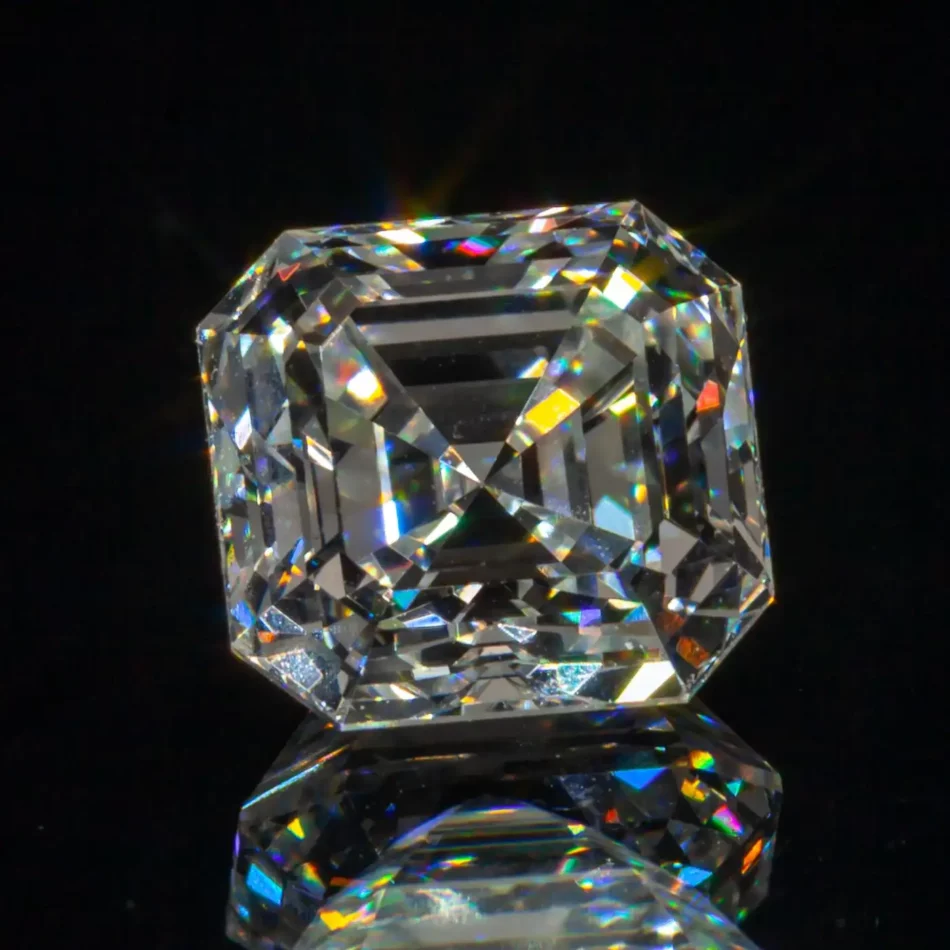
Diamond certification requires enormous skill, so for accurate determinations of both a stone’s genuineness and quality, it’s important to choose your lab wisely. Perhaps the most respected is the Gemological Institute of America (GIA). Not only do they offer precise grading on the 4Cs — cut, clarity, color and carat weight — but they also use advanced techniques to distinguish natural from lab-grown diamonds and simulants. These include thermal testing, which measures how fast a gemstone disperses heat; fluorescence imaging, which grades the “glow” it emits under ultraviolet light; and photoluminescence spectroscopy, which analyzes its atomic structure via high-intensity lasers. Other organizations, such as the International Gemological Institute (IGI), Gübelin Gem Lab and the American Gem Society (AGS) are reputable organizations that can confirm whether a buyer has a fake diamond or a genuine stone.
Certificates from one of these labs provide peace of mind to the owner and also act as a guarantee for insurers and for future buyers, essential for a smooth and fair resale, as well as potential upgrades.
Updated January 2025.
